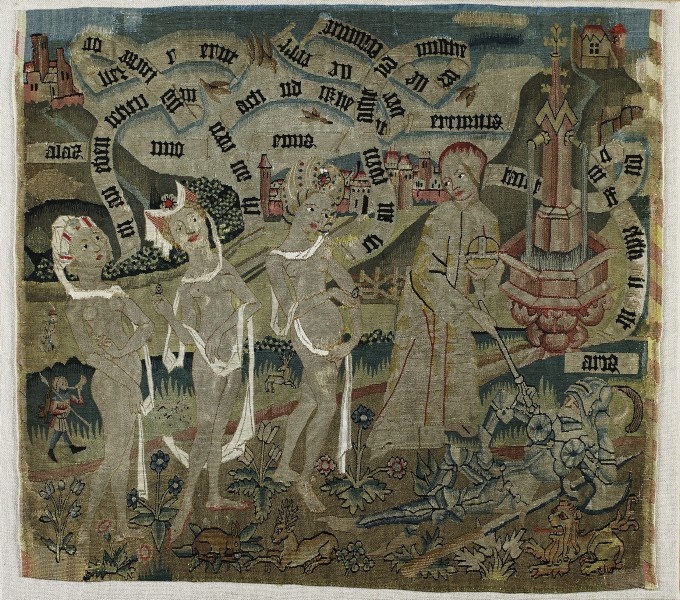Diese Kissenplatte entstand um 1490. Stilistisch steht sie noch in der Tradition der Spätgotik, einzelne Bildelemente weisen jedoch bereits auf die Kunstauffassung der Renaissance hin. So wurde mit dem Urteil des Paris ein Bildthema aus der antiken Mythologie gewählt. Die Göttinnen Athena („Palas“), Juno und Venus sind in antiker Nacktheit dargestellt, Hermes und Paris tragen dagegen zeitgenössische Kleidung. Ebenso entsprechen die Schriftbänder mit Namen und Erläuterungen noch dem mittelalterlichen Bildverständnis.
Ankauf aus Mitteln der Stiftung Fritz von Harck, Leipzig, 1934. Ehemals in Fritzlar (Hessen). Restauriert durch die Abegg-Stiftung Bern, 1989.
en

